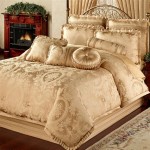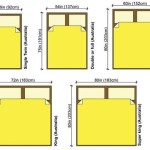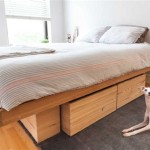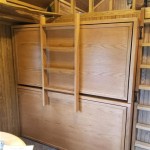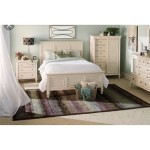Are Bunk Beds Safe For 5-Year-Olds?
Bunk beds evoke a sense of childhood adventure and fun, often a coveted addition to children's bedrooms. However, when considering a bunk bed for a younger child, particularly a five-year-old, safety becomes a paramount concern. Understanding the potential risks and implementing appropriate safety measures is crucial for ensuring the well-being of the child.
The American Academy of Pediatrics (AAP) recommends that children under six years old should not sleep on the top bunk of a bunk bed. This recommendation stems from the significant risk of falls, which can result in serious injuries such as head trauma, fractures, and lacerations. Young children may lack the developmental coordination and judgment necessary to navigate the ladder safely and may be more prone to rolling off the top bunk during sleep.
Falls are the most prominent safety concern associated with bunk beds. Even with guardrails, the risk remains. Children may attempt to climb over the guardrails, particularly during play, or the guardrails themselves may not be adequately secured or of appropriate height. Regular inspection of the bunk bed structure is vital to identify and address any loose screws, broken slats, or weakened guardrails.
Strangulation presents another potential hazard, primarily for younger children. Head and neck entrapment can occur in gaps between the guardrail and the mattress, between the ladder rungs, or in openings created by decorative features on the bed. Careful measurement of these spaces and adherence to safety standards are essential for mitigating this risk. Parents should ensure that the mattress fits snugly within the frame and that there are no gaps large enough for a child's head or body to pass through.
The choice of mattress also plays a significant role in bunk bed safety. The mattress should be specifically designed for bunk beds and should fit snugly within the frame. A mattress that is too small can create dangerous gaps between the mattress and the guardrails, while a mattress that is too thick can reduce the effective height of the guardrails, increasing the risk of falls.
Beyond the physical structure of the bunk bed, establishing clear safety rules and supervising children's activities around the bed are critical. Children should be instructed to use the ladder only for getting in and out of the bed and never to play on the top bunk. Jumping, roughhousing, and other boisterous activities should be strictly prohibited on and around the bunk bed.
Proper ladder usage is a critical aspect of bunk bed safety. The ladder should be securely attached to the bed frame and positioned at an angle that allows for safe ascent and descent. Children should be taught how to use the ladder correctly, placing their hands and feet securely on the rungs and avoiding distractions. The area around the ladder should be kept clear of obstacles to prevent tripping hazards.
Nightlights can enhance safety by improving visibility, particularly for younger children who may need to navigate the ladder in the dark. A strategically placed nightlight can illuminate the ladder and surrounding area, reducing the risk of falls. Additionally, ensuring the bedroom is well-lit during waking hours can also contribute to a safer environment.
Regular inspections of the bunk bed are paramount for maintaining safety. Parents should routinely check for loose screws, broken slats, and any other signs of wear and tear. Guardrails should be examined to ensure they are securely fastened and of appropriate height. The ladder should also be inspected for stability and proper attachment.
While manufacturers adhere to safety standards, ongoing vigilance is essential. Parents should remain informed about recalls and safety alerts related to bunk beds. Registering the bunk bed with the manufacturer allows for direct notification in the event of a recall.
When considering a bunk bed for a five-year-old, careful consideration of the potential risks and diligent adherence to safety guidelines are necessary. Parents should thoroughly evaluate the child's maturity level, physical abilities, and adherence to rules before making a decision. Open communication with the child about safety rules and consistent supervision are vital for ensuring a safe sleeping environment.
Ultimately, the decision of whether or not a bunk bed is appropriate for a five-year-old rests with the parents. By understanding the inherent risks and implementing appropriate safety measures, parents can help minimize the potential for accidents and create a safer sleeping environment for their child.

How Safe Is Your Bunk Bed Do The Rails Meet Regulation Standards

Everything Pas Should Know About Bunk Beds Cuckooland

Everything Pas Should Know About Bunk Beds Cuckooland

Are Loft Bunk Beds Safe For Kids Toddlers Sleep Advisor

Guide To Bunk Bed Safety Cuckooland

Are Loft Bunk Beds Safe For Kids Toddlers Sleep Advisor

5 Bunk Bed Safety Tips Every Pa Should Know

The Best Bunk Beds For Kids Cute Safe Toddlers Sheknows

Slide Bed Safety Checklist Sleep And Safely Maxtrix Kids

Guide To Bunk Bed Safety Cuckooland
